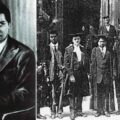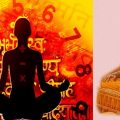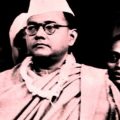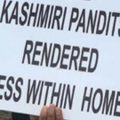Ramanujan: Tryst with Mathematics from Cambridge to His Last Days at 32
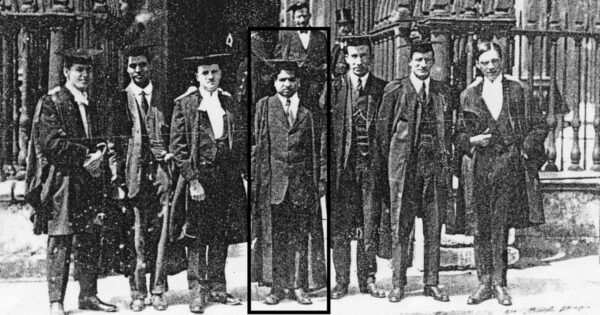
Ramanujan’s journey from the streets of Kumbakonam to Trinity College, Cambridge, may be best described by the term “Tryst with Destiny”. It has all the elements of love and soul combined together to shape a picture that will inspire generations to come. However, this journey wouldn’t have been possible without the shadow of Godfrey Harold Hardy. Hardy, as an individual and as a distinguished mathematician, truly understood and appreciated the magnitude and effect of Ramanujan’s work that changed everything for the man “who defined infinity”.
In the first part, we witnessed Ramanajuan’s romantic struggle to satisfy his hunger for mathematical equations and at the same time make people believe in him and his work. Ramanujan’s stint at the Madras Accountant General’s office and thereafter his tenure at the Madras Port Trust under Sir Francis Spring and S. Narayana Iyer give a tinge of romanticism to his love for mathematics.
Ramanujan’s friend, Narayana Iyer, who was a member of the Mathematical Society, had a great fondness for Ramanujan. In the evenings, they would go to the elder’s house on Pycrofts Road in Triplicane. There, sitting on the porch, they solved mathematical problems on their slates till midnight. Narayana Iyer was a good mathematician. Nevertheless, Ramanujan’s habit of collapsing many steps left Narayana dazed. Many times, Narayana Iyer said, “Descend to my level of understanding and write at least ten steps between the two steps of yours.” “Why? Wasn’t it obvious? ” That would be Ramanujan’s answer.
In this second installation, we will witness Ramanujan’s tryst with Cambridge, the period of uncertainty during the First World War, the deterioration of his health, and the voyage back to his home. This installation will give a clear picture of Ramanujan’s journey within Cambridge, his struggle, and the finality of his life.
The Tryst with Cambridge
Neville and his elder brother traveled to London to meet Ramanujan. Neville accompanied Ramanujan to Cromwell Road. The reason was to make Ramanujan feel at home. The National India Association had their own offices. The world was completely different for Ramanujan. It was new. London’s population during that period was ten times that of Madras. The streets of London appealed to Ramanujan in a strange way. He witnessed Englishmen of various sorts, ranging from “Bowler hats” to “flat working men’s caps”, women of refined taste and in rags too.
Ramanujan resided on Chester Road, in Neville’s house. It is a small suburb of Cambridge. The house seemed to be spacious and Ramanujan enjoyed a fine degree of privacy. Fees and paperwork were taken by Hardy and Neville to ensure that Ramanujan’s name was enlisted on the first-year student list. The time was spring, supplemented by beautiful and warm weather. He worked with Hardy and Littlewood. He worked hard and tried to make the most productive use of his time. Some lectures were taken by Hardy and others by Aurthur Berry, a senior King’s college mathematician. At that point, he was in his early fifties.
During a lecture, as Berry was dissecting a formula on the board, he turned around to notice that Ramanujan was filled with excitement (facial expression). Berry enquired whether Ramanujan was willing to contribute something. Ramanujan walked to the blackboard and scrawled down the results that Berry had yet to prove.
Rumors about Ramanujan started to float around. He mostly kept to himself, and as a result, he lived in a restricted space created by himself. There was distance to cover in between Hardy’s room and Neville’s house, and because of this reason, in the early week of June, Ramanujan moved into one of the rooms which was closest to Hardy’s. Ramanujan never wanted to leave Neville’s house, as there was a degree of mutual trust shared by both, and there was an unspoken connection. Ramanujan was preparing himself to dive deep in the ocean of mathematics and desired to be in an intoxicated atmosphere of debate and discussion.
Ramanujan’s notebooks were a compilation of theorems and corollaries, followed by examples. Pages after pages were filled with them. There was a problem, lack of proof and explanations. Now, this amounted to unbound exasperation and sometimes pure frustration for later mathematicians, as it took around weeks to figure out a single pair of modular equations. He was compared to Swiss mathematician Leonard Euler and Prussian mathematician Carl Jacobi. Both of them left an astonishing legacy in the pages of mathematical history during the 18th century. Hardy, while studying Ramanujan’s notebooks, appreciated them and found them to be worth publishing. As a result, the entries in the notebooks took on a new shape, in the nature of mathematical research papers, fit to be introduced to the world.
In India, Ramanujan’s work had limited or no exposure. There was none who could truly appreciate the import of Ramanujan’s work. In Cambridge, with Hardy and Littlewood, that discrepancy was modified. In reality, he was in a place where his work was about to get the recognition it deserved. In the middle of a community of mathematicians who could truly understand the nature of his work, being a stranger in a world completely different from his own meant little to him.
During his stay, Ramanujan’s love lost for western accessories was constant. He struggled with knives and forks, his shoes pinched his feet, and he felt suffocated in his coat and trousers. The food was tasteless. However, it never dampened his spirit and excitement. He had no financial crunch and could devote every second to mathematics. To be fair, he was living in a state of ecstasy.
More often than not, Ramanujan said that solutions to complex mathematical problems were blessings from the goddess Namagiri. Though, the academic mind termed it as ‘Intuition’. Ramanujan’s time with Hardy prepared him to accept the need for proof and explanations to work out complicated modular equations, complex theorems and fractions. Hardy was a man of proof and reason. Under Hardy’s influence, Ramanujan gradually appreciated and absorbed different points of view, and his research papers took the shape of the works of a seasoned mathematical prodigy.
The Period of Uncertainty
World War I was knocking at doors; the whole of Europe was about to be drenched in war. There was a mixed feeling that the war would be over in a period of months. That feeling was shattered soon. Cambridge became the epicenter of all the war-related activities. As it was refurbished into a training camp and hospital. Littlewood was summoned to join as a second Lieutenant in the Royal Garrison Artillery. This led to Ramanujan’s dependency on Hardy increasing. The period of war was an unpleasant experience for Ramanujan too. There was a three-fold increase in the prices of food articles. Communication with German mathematicians was completely severed.
It is worth mentioning that during this period, Ramanujan never missed an opportunity to send letters to his family and friends. Letters to his family were always a source of assurance that he was strictly observing religious practices and following a vegetarian diet. Ramanujan’s letters to his friends consisted of his latest work and the progress made in it. He did send literature books (in English) back home to his brothers.
Ramanujan’s correspondence with his father was of a formal nature. In his letters, he reminded his father that the ancestral home had to be maintained in the proper manner. On the contrary, his letters to his mother were filled with detailed descriptions of the World War, the problems people had to face on a day-to-day basis, the number of men fighting in the war, battlefronts, fighter planes involved in combat, and the participation and support of the Indian Kings towards the war.
In a simple sense, letters to his mother were written with the purpose of impressing her with such an account. Ramanujan was comfortable “In”, preparing food for himself in English weather, clothes, and the absence of letters from Janaki – all of this combined troubled him. On one such cold night in Cambridge, one of his friends, P.C. Mahalanobis, from Bengal, witnessed Ramanujan huddled by the fire. He inquired, “Are you warm at night? ” Ramanujan replied ‘No’. It came to his observation that Ramanujan, unable to bear the extreme cold, slept wearing his overcoat, supplemented by a shawl, wrapped around him. For a moment, P.C.Mahalanobis thought that Ramanujan may not have “enough blankets”. When he checked, he found that the bed-spread was loose, and the blankets lay absolutely intact, tucked neatly under the mattress. So, it turned out to be that Ramanujan had blankets, but he couldn’t understand what to do with them. Mahalanobis patiently instructed Ramanujan about how to use it properly.
Though Ramanujan suffered these discomforts, he was deeply satisfied in the world of mathematics, where his emotional and intellectual mind collaborated to form uniform synthesis. Like any mortal being, he desired recognition, too. In 1915, five of his papers were published in English journals, and one of his papers was published in the Indian Mathematical Society Journal.
Ramanujan has now attained a legendary stature in Cambridge. His popularity was on the rise. He mixed well with both English and Indian students. Ramanujan’s tutor, E.W.Barnes, claimed Ramanujan to be the most brilliant student among all the Trinity students whom he taught. Ramanujan’s scholarship was extended for a year. He was financially secured. A portion of this amount was sent to his family in India. He received a B.A, in 1916, due to his research paper on highly composite numbers.
Though on the surface all seemed fine, aligning to an unknowing culture, alien in nature, doing mathematics vigorously took a toll on Ramanujan’s health. His physical and emotional quotients were slowly getting drained. A good number of academics, which included Littlewood, Neville, and Hardy, spent a good number of their evenings at the dining hall. This helps them to relax and prepares them for the day’s hard work. Ramanujan’s scenario was completely different. He was a strict vegetarian. He cooked his food in the oven and mostly ate alone. On days when he was successful in collecting the ingredients, he would cook rice, Sambar and Rasam. The majority of his dinner meals consisted of curds and fruits.
Ramanujan’s daily life in Cambridge was a shadow of his life in Kumbakonam. He never deviated from his vegetarian diet and rigidly performed the Hindu rituals in front of the poster of a deity he had in his room. He offered daily pooja. During the performance of his daily Pooja, he wore a dhoti, applied Namam to his forehead, and only after the Pooja had been performed, would he wipe off the ‘namam’.
Though it is hard to assume to what extent Ramanujan missed his life back at home, But it is quite plausible that he missed the home-cooked food, the vibrancy of the religious festivals, and the warm weather back home. The combination of war and a harsh winter did little to alleviate the situation. He found solace in mathematics and in companionship with Hardy. Hardy was the only one who truly understood Ramanujan and his gift, but he was a stern taskmaster too. Hardy always insisted that Ramanujan’s work should be affected at no cost. When Ramanujan was admitted to the hospital for his ongoing tuberculosis treatment, Hardy wished that Ramanujan would recover soon, so that they could solve complex problems together. Ramanujan felt guilty that he was unable to cope with Hardy’s pace. After spending three years in Cambridge, in early 1917, Ramanujan’s life was confined to four walls of his Cambridge room, Hardy and complex mathematical problems. For a few days, he would work for thirty hours at a stretch, followed by a step of 20 hours. Slowly, his health was showing signs of such an imbalance and strenuous lifestyle.
Ramanujan’s intellectual needs were being fulfilled at the cost of his physical turmoil. During those days, Indian students, especially from South India, came to England, suffered at the hands of a hostile climate, and risked developing tuberculosis and diseases of the chest.
Ramanujan’s equation with food was poor. In England, the situation worsened. As a result, Ramanujan, on most occasions, skipped his meals and contributed his time to solving challenging problems. A strict vegetarian diet added to the worsening health condition. During the war, the prices of food articles increased. There was a shortage of supplies, and there were times when potatoes and sugar were also not available on the market. Ramanujan’s life was impacted in the most extensive sense. All this led to the health condition from which he never recovered completely.
A Soul at Crossroads
In the spring of 1917, Hardy was compelled to send a letter to the University of Madras informing them about Ramanujan’s suffering from some incurable disease. The primary cause of this worsening health condition was malnutrition. He’s stay at the hospital was for a shorter period in the beginning. He recovered soon and was out of the hospital. After his discharge, Hardy nursed Ramanujan for a couple of weeks.
Ramanujan was a difficult patient to handle. He was particular about food, never complied with the instructions of the doctor, and, to an extent, had little faith in medicines. He was shifted to the Mendip Hills Sanatorium at Hill Grove in Somerset. He was under the treatment of Dr. Muthu. Dr. Muthu was a tuberculosis specialist. Ramanujan met him on the Nevasa.
During his stay at the Sanatorium, he insisted on doing mathematics. He disliked the cold weather and the food that was served at the Sanatorium. There were other reasons which contributed to his degree of unhappiness. The relationship between his mother and wife was at an all-time low. His mother interrupted Janaki’s letters. Consequently, Janaki stopped sending letters to Ramanujan and left home.
In 1916, Barnes wrote to the University of Madras, stating that there was a possibility that Ramanujan might be elected a fellow of Trinity College, considering his achievements. The word never reached its conclusion. Due to which, Ramanujan became more gloomy. During this period, Ramanujan shifted to the county town of Matlock. It was located about 150 miles north-west of London. The English sanatoriums shared the same vibe and did nothing to uplift the dampened spirit of Ramanujan. Everything felt more depressing. He craved South Indian cuisine and wanted his family around him.
Ramanujan accidentally felt into the tracks at a London Underground station in front of an approaching train in one of the strange incidents recorded in 1919. He was saved that day due to the quick action of a guard, who spotted the incident on time, and pulled a switch to halt the train a few feet away from Ramanujan. Consequently, he was arrested by Scotland Yard, but Hardy managed to get him free.
In the later weeks of February, Ramanujan was elected to the Cambridge philosophical society. This, to an extent, helped raise his spirits. Around ten days later, Ramanujan received a telegram from Hardy. It stated that Ramanujan had been named a “Fellow of the Royal Society”. The whole experience was thrilling. His friends were delighted to hear this news and sent letters of congratulations. When they came to know of his ill-health and the food rationing, plenty of food was sent from India. Day by day, his physical structure was deteriorating. He appeared frail and thin.
Diet is an important part of Tuberculosis recovery. He was served scrambled eggs, tea, rice tossed with chillies and mustard cooked in butter, and various other forms of meals to boost his recovery process, but all of these never served a purpose. A.S. Ramalingam offered to cook food for him, but the hospital authorities never permitted the same. Ramanujan’s rigidity towards the vegetarian diet cost him severely. It seemed like he was slowly starving to death. He even refused to consume porridge, oatmeal and cream. He longed for South Indian food. All of this profusely added to the worsening health condition. Ramanujan was admitted to a hospital in London. Though he was attended to by several specialists, the diagnosis was still not conclusive. He was gripped with high fevers at intervals, associated with a pain no one could trace.
During this phase, in 1918, he was awarded the Trinity fellowship. This was a combined result of his brilliance and the efforts of Littlewood and Hardy. This cheered him to a great extent.
After the War came to an end, Hardy realized that a trip to India would be good for Ramanujan’s health and also for his recovery. Consequently, he corresponded with Francis Dewsbury, registrar of the University of Madras, about it. The parameters assured Hardy that it was safe for Ramanujan to travel. His health condition had improved. His temperature was within the normal brackets, and he had gained fifteen pounds. Hardy wanted to put this suggestion in the most amicable manner without hurting Ramanujan sensitivities. As a result, Ramanujan was offered to join as a University professor. His salary was about Rs. 400 per month. He was also awarded a fellowship of 250 pounds per year by the university. This was surplus to the amount awarded to him by Trinity. Ramanujan would recall his struggling days in Kumbakonam, the withdrawal of his scholarship, and his experience in Madras, where he survived due to the patronage of Ramachandra Rao and the meager income he received from tutoring.
Ramanujan wrote a letter to Dewsbury. In the letter, he conveyed his gratitude for the fellowship amount, but requested that the surplus amount be used to pay school fees for poor and orphan students, as well as for their books.
Returning Home
On 13th March 1919, Ramanujan’s journey back home started. When he landed in Bombay, he was greeted by his mother and brother, but there was no trace of Janaki. Domestic conflict had played a major role in his worsening health condition, while he was in England. He wanted to change the scenario. Though his mother relentlessly protested, Ramanujan sent for Janaki.
Initially, Komalthammal thought of taking Ramanujan to Rameswaram to perform a purification ceremony. But, after observing the health condition of her son, she decided to drop it. They returned to Madras after staying few nights in Bombay. By this time, Ramanujan had achieved celebrity status. The life that began with humble origins, met starvation, but overcoming all these obstacles, induction into the Royal Society created a legend, which was to test the elements of immortality.
Upon his arrival, he was requested to accept the offer of a university professorship. He postponed the same, considering his health. The elite of Madras came to meet and congratulate him. He was their hero. Many of them wanted to pay or bear his expenses, and to host him. Eventually, he moved to a house named “Venkata Vilas” located on the Luz Church Road. Janaki joined him soon. She was eighteen by now. Slowly, Ramanujan and Janaki came closer emotionally, which was not the case before.
Physically, Ramanujan looked different. There was a change in his personality which surprised both his family and friends. He had become more bitter, short-tempered, and always looked depressed. He reacted at the slightest provocation. The faith which he kept so close to his heart seemed to be affected. Ramanujan now craved Janaki’s companionship, and there was an element of rebellion in him against his mother’s obsession and possessiveness. The doctors advised that he should move inland, to avoid the summer. They adopted Kodumudi, a small town near Erode. Janaki took care of him, gave him his medicine, and nursed him all night. Once, Ramanujan, during a conversation, told her, “If only you had come with me to England, perhaps I would not have fallen ill. They shifted to Kumbakonam, after staying two months at Kodumudi. Though the best medicinal help was available, there was little that could have been done for his health, as Ramanujan had lost the will to live.
In his last days, mathematics remained his true consort. His intellectual vision expanded in an incremental manner, though death was already knocking on his door. He wrote to Hardy in detail about the mock-theta functions. He subscribed to new mathematical journals. Pages were filled with theorems and computational fragments.
George Andrews, the American mathematician, when he browsed through the pages a half-century later, couldn’t believe how someone could create such rich and complex equations while suffering from such pain and fatigue. It was almost inhuman.
In the words of Janaki, ‘It was always mathematics, even days before his death, he was scribbling’.
On 20th April, 1920, he breathed for the last time. He was just 32 years old. None of his orthodox Brahmin relatives participated in his funeral. Ramachandra Rao, arranged the cremation, helped by Rajagopalachari.
References:-
1. Hans Eysenck (1995). Genius Cambridge University Press
2. Hardy, Godfrey Harold (1940). Ramanujan: Twelve Lectures on Subjects Suggested by His Life and Work. Cambridge University Press.
3. Kanigel, Robert (2016). The Man Who Knew Infinity: A Life of the Genius Ramanujan. Simon & Schuster.
4. Krishnamachari, Suganthi (27 June 2013). “Travails of a Genius”. The Hindu.
My sincere thanks to Bandana Singh Bose to help me with the research and ideas for the write-up. My heartfelt thanks to Manoshi di for giving me the space and the opportunity to write and express myself.
Disclaimer: The views expressed here are solely of the author. My India My Glory does not assume any responsibility for the validity or information or images shared in this article by the author.
Image sourced from Wikimedia.
Facebook Comments Box
The following two tabs change content below.

Abhishek Bose
Abhishek Bose is a practicing corporate lawyer with interests in Indian History.

